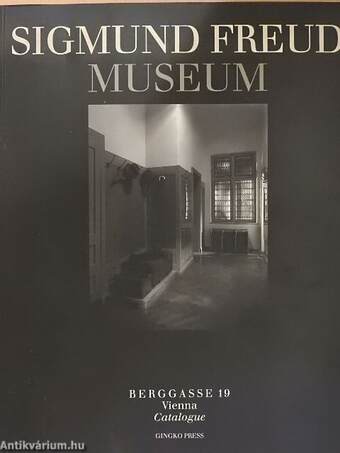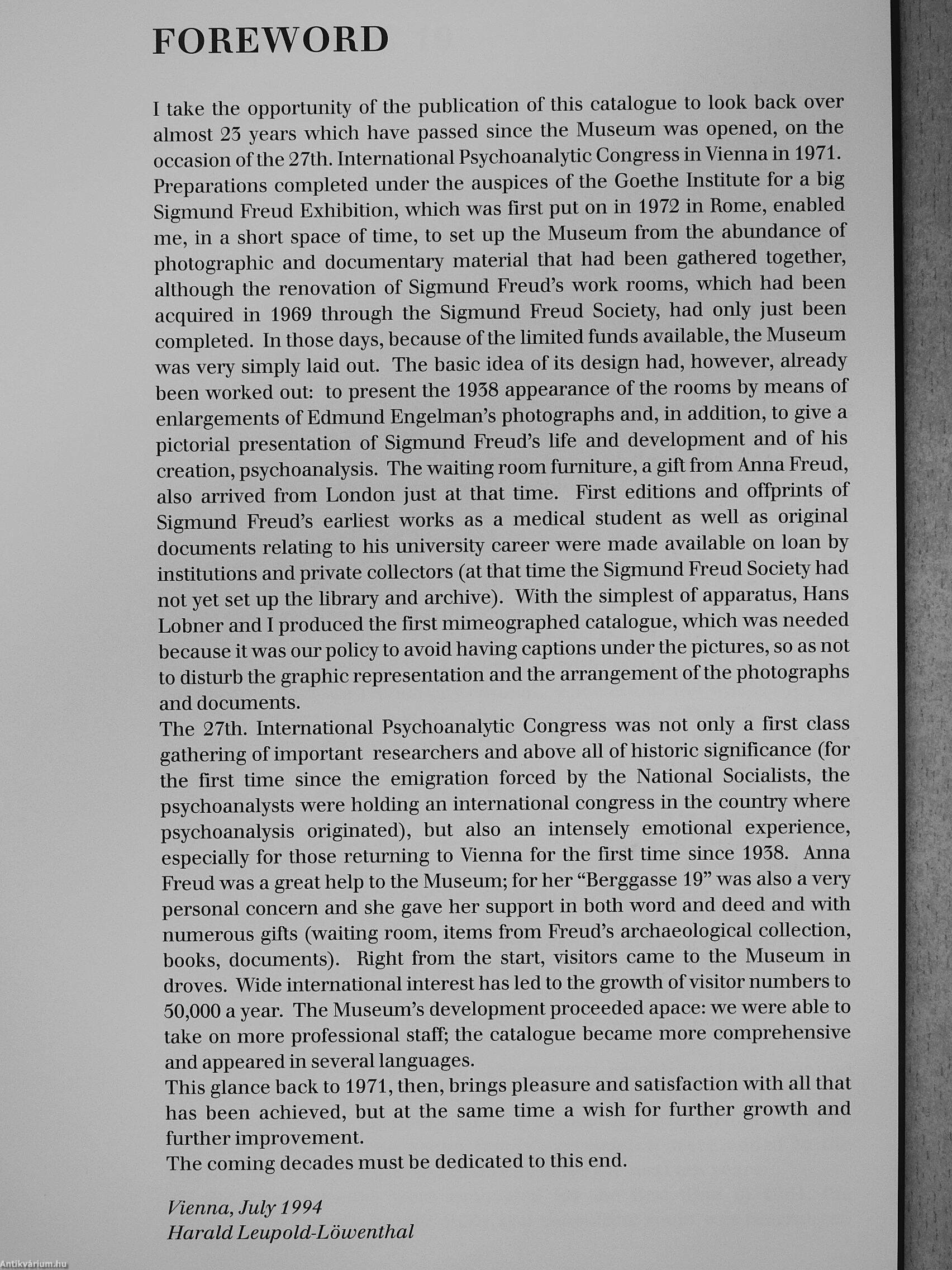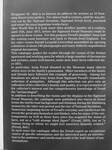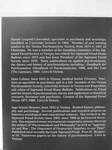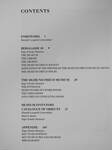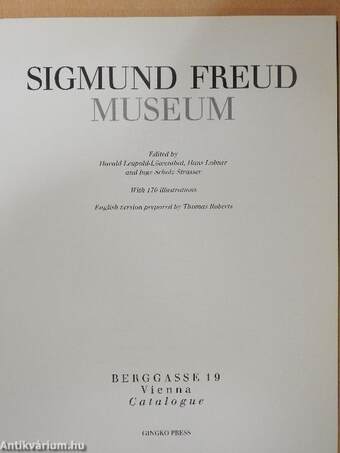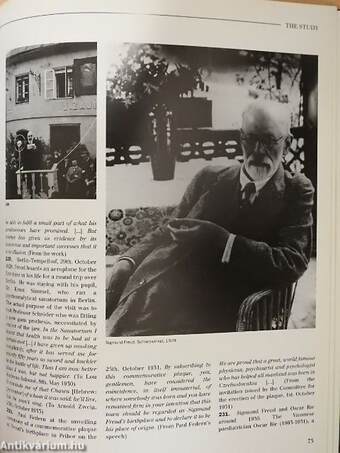1.067.894
kiadvánnyal nyújtjuk Magyarország legnagyobb antikvár könyv-kínálatát

VISSZA
A TETEJÉRE
JAVASLATOKÉszre-
vételek
Sigmund Freud Museum
Berggasse 19, Vienna - Catalogue
| Kiadó: | Gingko Press, Inc. |
|---|---|
| Kiadás helye: | |
| Kiadás éve: | |
| Kötés típusa: | Varrott papírkötés |
| Oldalszám: | 112 oldal |
| Sorozatcím: | |
| Kötetszám: | |
| Nyelv: | Angol |
| Méret: | 27 cm x 22 cm |
| ISBN: | 3-927258-24-5 |
| Megjegyzés: | Fekete-fehér fotókkal gazdagon illusztrálva. |
naponta értesítjük a beérkező friss
kiadványokról
naponta értesítjük a beérkező friss
kiadványokról
Előszó
TovábbFülszöveg
Berggasse 19 - that is as famous an address for science as 10 Downing Street is for politics. For almost half a century, imtil he was driven out by the National Socialists, Sigmund Freud lived, practised and wrote his most important works here.
After World War II it took more than another quarter of a century, mitil 15th, June 1971, before the Sigmund Freud Museum could be opened in these rooms. For this purpose Freud's daughter Anna had the waiting room furniture sent back to Vienna from England. For the other rooms Harald Leupold-Lowenthal assembled an opening exhibition of about 140 photographs and many hitherto unpubhshed original documents.
This catalogue guides the reader through the rooms of the former apartment and working area for which a large number of documents and pictm-es, some well-known, some new, have been collected since 1971.
In particular, Anna Freud donated to the Museimi many objects which were in the family's possession. Other members of the famUy cind... Tovább
Fülszöveg
Berggasse 19 - that is as famous an address for science as 10 Downing Street is for politics. For almost half a century, imtil he was driven out by the National Socialists, Sigmund Freud lived, practised and wrote his most important works here.
After World War II it took more than another quarter of a century, mitil 15th, June 1971, before the Sigmund Freud Museum could be opened in these rooms. For this purpose Freud's daughter Anna had the waiting room furniture sent back to Vienna from England. For the other rooms Harald Leupold-Lowenthal assembled an opening exhibition of about 140 photographs and many hitherto unpubhshed original documents.
This catalogue guides the reader through the rooms of the former apartment and working area for which a large number of documents and pictm-es, some well-known, some new, have been collected since 1971.
In particular, Anna Freud donated to the Museimi many objects which were in the family's possession. Other members of the famUy cind friends have followed this example of generosity. Among her donations are about sixty items from Sigmimd Freud's remarkable collection of antiquities. Although this selection can give only an indication of his collection's beauty and quality, it is representative of the collector's interest and the comprehensive knowledge of Freud the "archaeologist".
In addition to describing the rooms and the displays in the Sigmund Freud Museum, the catalogue now published also traces in broad terms the intellectual backgroimd and thinking during the Habsbm-g monarchy, the inter-war period and the rise of National Socialism. Numerous surprising facets of Freud's everyday and intellectual life reveal the great psychoanalyst and thinker, who for many of his contemporaries as well as those born since has acquired the status of hero, not as a "cold strange ideal figure" (Freud, 1910), but as "a human being to whom we might feel ourselves distantly related." (Freud, ibid.)
In such ways this catalogue offers the Freud expert an exceptional source of specific information and the interested party an introduction to the ambience and intellectual world of the trail-blazer of psychoanalysis.
Harald Leupold-Löwenthal, specialist in psychiatry and neurology. Qualified as University lecturer in 1982. Member of and training analyst in the Vienna Psychoanalytic Society, from 1974 to 1981 its Chairman. He was a member of the founding committee of the Sigmund Freud Society in Vienna, has edited the Sigmund Freud House Bulletin since 1975 and has been President of the Sigmund Freud Society since 1976. Many publications on applied psychoanalysis, the theory and history of psychoanalysis; including : Handbuch der Psychoanalyse (Handbook of Psychoanalysis), 1986, and Der Laie (The Layman), 1990. Lives in Vienna.
Hans Lobner, born 1944 in Vienna, medical doctor (Vienna). Practises as specialist in psychiatry and is a full member of the Vienna Psychoanalytic Society, university lecturer in Vienna and Klagenfurt, sub-editor of Sigmund Freud House Bulletin. Publications on Freud and the history of psychoanalysis, theory and application in historical research, literature and psychiatry. Curator of the Sigmund Freud House 1971-1990. Lives in Vienna.
Inge Scholz-Strasser, born 1952 in Vienna. Studied history, philosophy and psychology. Several publications and research projects on historico-sociological and educational subjects. Has worked in the Sigmund Freud Society since 1985, since 1988 as its General Secretary. Has organised many international congresses, among others on the subject of "Psychoanalysis and Philosophy" as well as "Aggression and War . The Disavowel of Destructive Impulses in our Time". Pubhshed most recently the book Sigmund Freud. Wien IX. Berggas-se 19. Numerous papers on the history of psychoanalysis. Lives in Vienna. Vissza
Témakörök
- Idegennyelv > Idegennyelvű könyvek > Angol > Művelődéstörténet
- Művelődéstörténet > Eszmetörténet > Tudományok
- Művelődéstörténet > Intézményei > Múzeumok
- Pszichológia > Alkalmazott lélektan > Pszichotechnika > Pszichoanalitika > Freudizmus
- Pszichológia > Pszichológia története, módszerei > Tanulmányok
- Pszichológia > Idegennyelvű > Angol
- Idegennyelv > Idegennyelvű könyvek > Angol > Pszichológia



